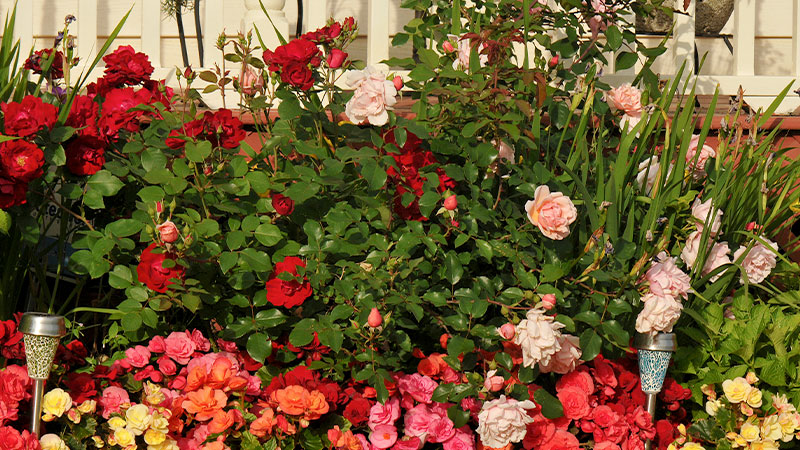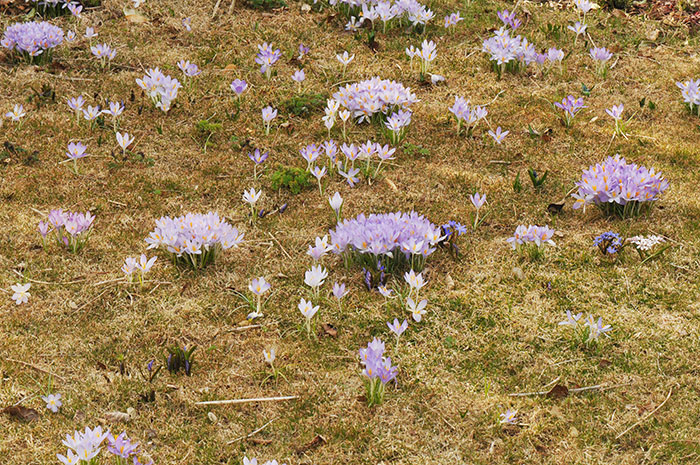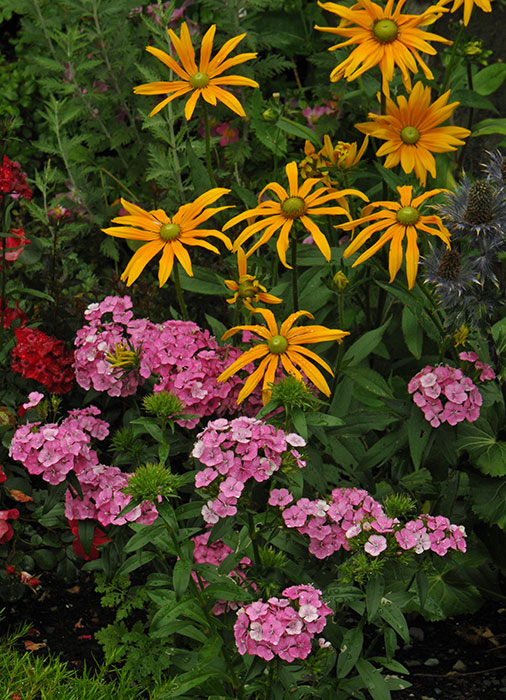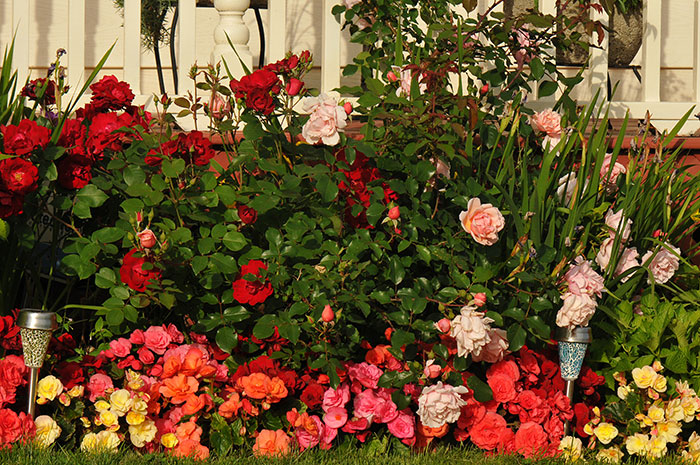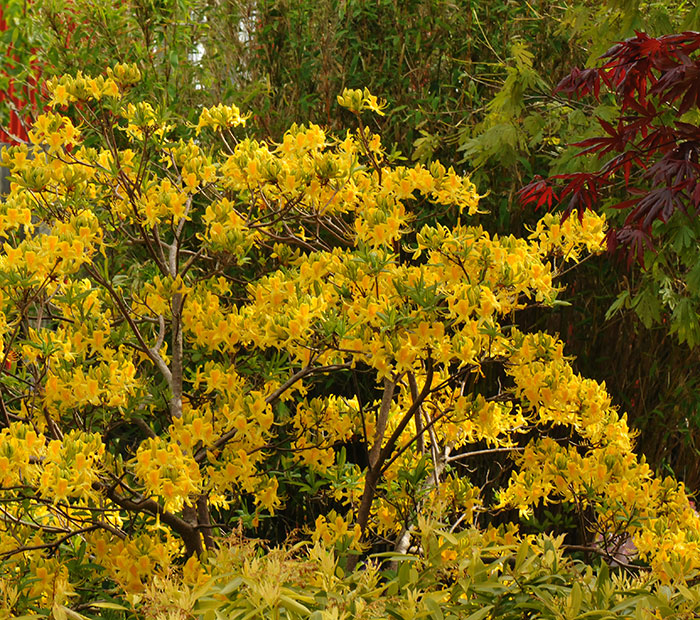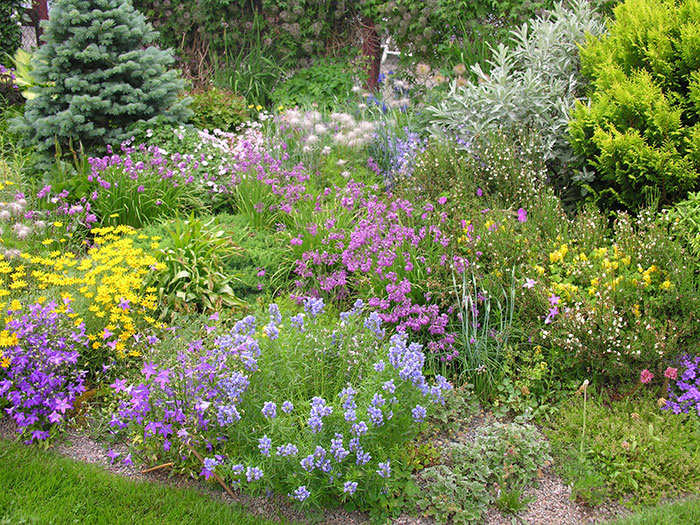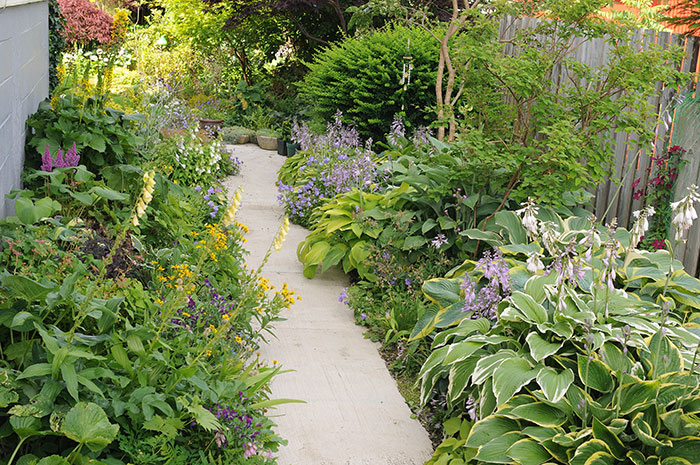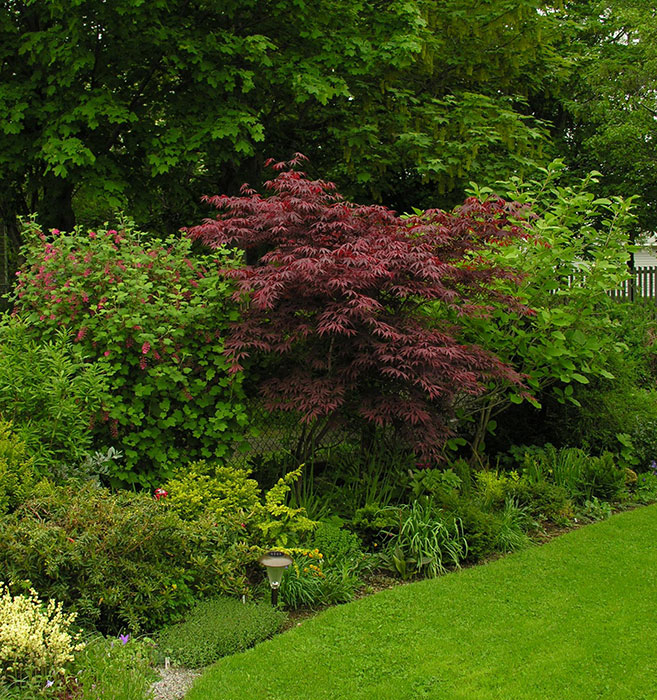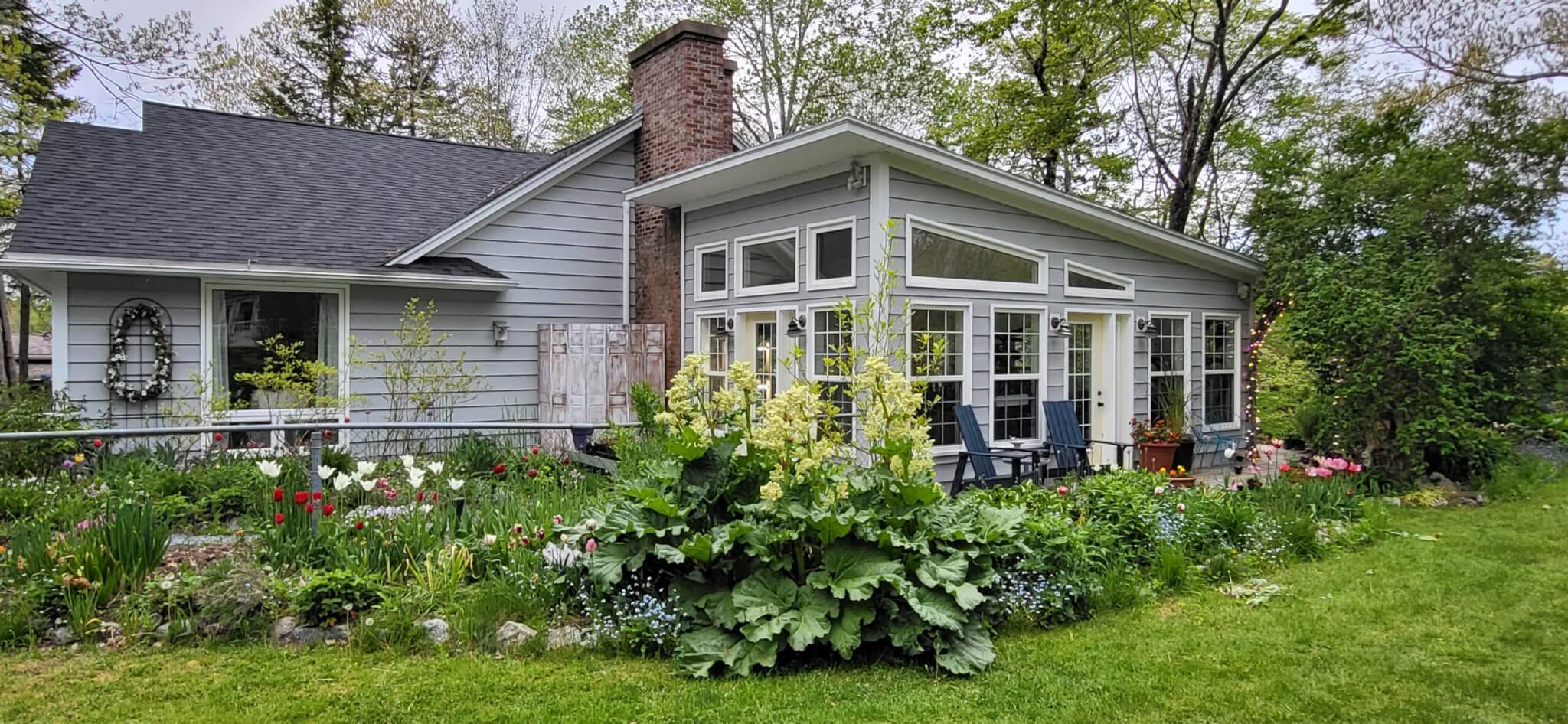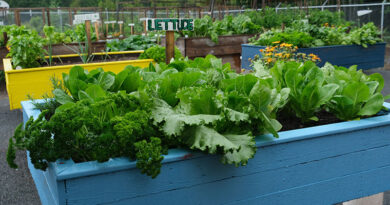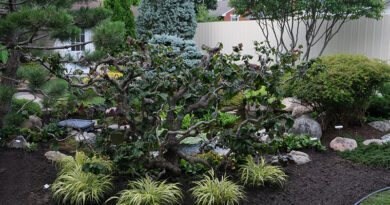Garden of Todd Boland
Garden of Todd Boland, St. John’s, Newfoundland
Story and pictures by Todd Boland
From a young age, I always had a love of gardening. My father had his vegetable garden and my mother loved her flowers. So gardening was in my blood. I created my first garden, located in a challenging area under a large maple, during my teens. Through many trials and experiments, I created a woodland setting replete with ferns, astilbe, hosta and other classic shade plants.
I have now been gardening for 35 years on a relatively small lot containing a back yard 50 feet by 50 feet, a side yard 50 feet by 10 feet and a small front garden just 40 feet by 15 feet. The back receives part day sun, the side yard mostly shade and the front garden morning sun, so needless to say, I grow mostly woodland plants that thrive under part shade conditions. The flower season starts in late March to early April with the first blooming winter aconites and spring heath, ending in early November with fall gentians, autumn crocus and bud-blooming heathers….not bad for an area known for its long snowy winters.
At one time I had several large trees along the north side of my property but the tail end of a hurricane some 25 years ago, took out the majority. Those that remained looked out of place so I decided to remove them all and start the ‘garden skeleton’ from scratch. Today I have no large trees on my property. The tallest are the ‘Suminigashi’ and ‘Red Trompenberg’ Japanese maples and the Magnolia sieboldii, each at about 15 feet. While they do provide shade, it is mostly dappled, allowing me to grow a wide variety of woodland gems.
I do love Japanese maples, and St. John’s, being Zone 5b, is right on the edge of where they can be grown. Besides the two noted earlier, I also grow ‘Bloodgood’, ‘Red Dragon’, ‘Inaba Shidare’, ‘Omureyama’ and ‘Koto-no-Ito’. The former five have purple summer foliage and turn scarlet in fall while last two have green summer foliage but wonderful pumpkin-orange and golden-yellow fall foliage respectively.
I find azaleas to be perfect companion plants for Japanese maples, so I utilize a few of these. The most dramatic is my 30 year old Pontic azalea (Rhododendron luteum) which produces hundreds of fragrant yellow flowers each June. The other woody plants I grow include eight dwarf mountain-ash (Sorbus) species from China, which have either white or pink fruit rather than orange-red we typically associate with mountain-ash. You might be starting to see a trend developing; many of the plants I grow are from Asia. At first this was a coincidence but now I purposely seek out Asian species as that part of the world appears to be the epicentre for fantastic foliage plants.
Dealing with considerable shade, I have come to learn the importance of foliage in a garden. Most woodland plants have modest floral displays, so selecting plants whose foliage is as attractive as their flowers, is crucial to creating a pleasing garden under shady conditions. Hosta are the main feature along the north side yard, combined with Ligularia, ferns and several baneberry (Actaea) species which have white, red or black berries. Hosta are also used throughout the rest of the garden. Astilbe are great contrast plants for hosta, as are ferns, a group of plants I think more gardeners need to utilize.
Other great foliage companions I use include ever-popular Heuchera, hellebores, Rodgersia, primroses and lungwort. I especially love Japanese Hakone grass (Hakonechloa macra), which does well in both shade and sun. Perhaps the most spectacular woodlander I grow is Japanese wood poppy, Glaucidium palmatum, with large maple-like leaves and saucer-like white or lavender-purple flowers. Yellow waxbells (Kirengeshoma palmata), shield rodgersia (Astilboides tabularis), Himalayan mayapple (Podophyllum hexandrum) and umbrella leaf (Diphylleia cymosa) are among other outstanding foliage plants I cannot do without under my shady conditions.
I consider myself a plant collector and I enjoy pushing the limit of what can be grown in Newfoundland. Himalayan blue poppies (Meconopsis) have proven to be surprisingly easy to cultivate. I now have them in white and purple, along with the classic sky-blue. Black mondo grass (Ophiopogon planiscapus) is forming a large clump with purple-black, evergreen, grass-like foliage and delicate wands of small lavender bells in September. I grow this near Beesia deltophylla, which has evergreen heart-shaped foliage that is dark, glossy green. Another evergreen is the broad-leaved Skimmia japonica. With their persistent leaves, these plants help maintain garden interest until the first permanent snows fly, usually in late December. My bamboo, Fargesia muriale, is now 7 feet tall while Viburnum X bodnantense is nearly 10 feet. I was told none of these would survive in Newfoundland, but so far, so good. Never let your hardiness zone hold you back from experimenting with a favourite plant. You might be pleasantly surprised with what you can successfully grow.
Thankfully not all of my garden is shady. I have four small areas of the garden that are reasonably sunny. Here I grow my other favourite group of plants, alpines. Two of these sunnier areas have been developed as rockeries, one as a narrow alpine garden atop a retaining wall and the last, a special form of rock garden called a crevice garden. While a classic rock garden has blocky rocks positioned in a horizontal fashion, those of a crevice garden are narrow and positioned vertically, creating narrow crevices where many alpine plants thrive. The added bonus is you can pack twice as many alpines in a crevice garden as a regular rock garden. Bellflowers, primroses, pasque-flower and the highly fragrant pinks are just a few of the alpines featured in these gardens.
I also grow alpines in homemade alpine troughs. These are variable in shape, from round to square or rectangular, but all are relatively small, creating portable rock gardens positioned along the walkways, on decks or positioned in the garden where they can make the greatest impact.
Given my obsession with collecting plants, you would think I had no lawn. To the contrary, I find a lawn is a great foil for setting off planting areas. However, my lawn might be mostly grass and clover in summer (I love clover in a lawn as it provides food for our pollinators), but April and May are another story. Like many gardeners, I utilize many bulbs to help brighten up the spring garden. Besides the classic tulips, daffodils and hyacinths, I grow many minor bulbs such as crocus, scilla, puschkinia, bulbous iris and winter aconites. I also grow a rather uncommon but very easy to grow tuberous plant called Corydalis solida, a distant relative to bleeding-hearts. Unplanned was the self-seeding of the crocus, scilla and corydalis into the lawn. Now my lawn is a carpet of bulbs.
While beautiful, it does create its challenges when I try do my daily inspection of the garden in April and May! Newfoundland might be referred to “the Rock” and truth be told, we have plenty of them, but you might be surprised at the diversity of ornamental plants we can successfully grow. I regularly post images of my garden and feature certain plants so if you want to see what can be grown in my province, you can follow me on Facebook or Instagram.

